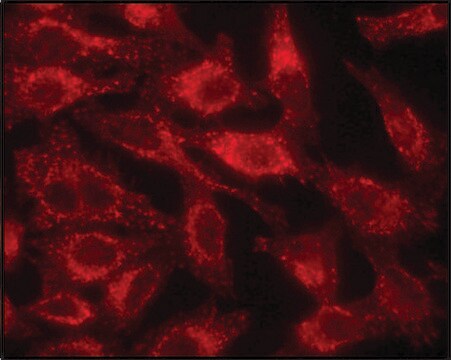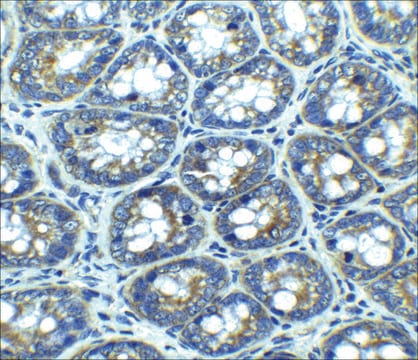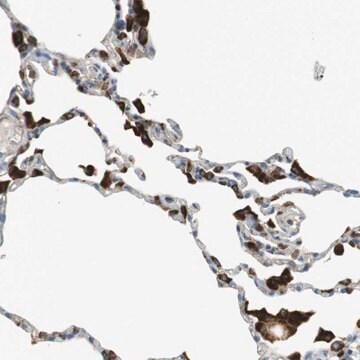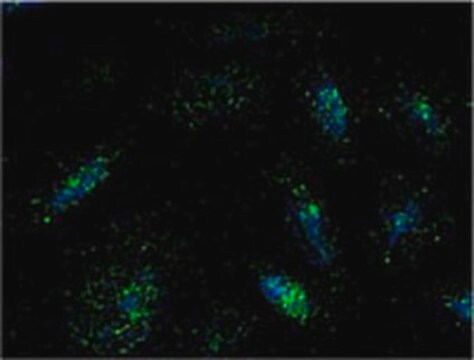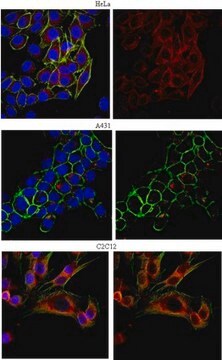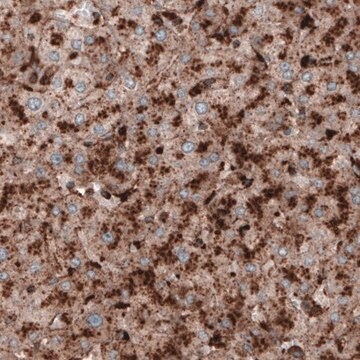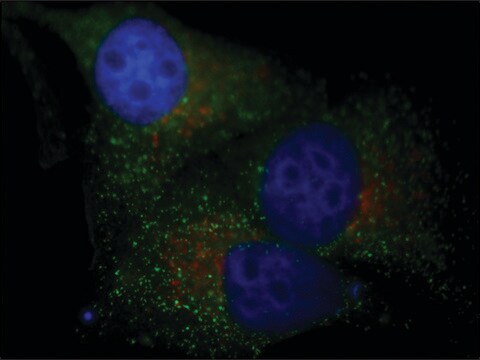AB2971
Anti-LAMP-1 (CD107a) Antibody
from rabbit, purified by affinity chromatography
Synonym(s):
lysosomal-associated membrane protein 1, lysosome-associated membrane glycoprotein 1, Lysosome-associated membrane protein 1, CD107 antigen-like family member A, CD107a antigen
About This Item
Recommended Products
biological source
rabbit
Quality Level
antibody form
affinity isolated antibody
antibody product type
primary antibodies
clone
polyclonal
purified by
affinity chromatography
species reactivity
human, mouse, rat
species reactivity (predicted by homology)
rhesus macaque (based on 100% sequence homology)
packaging
antibody small pack of 25 μg
technique(s)
immunocytochemistry: suitable
western blot: suitable
NCBI accession no.
UniProt accession no.
shipped in
ambient
storage temp.
2-8°C
target post-translational modification
unmodified
Gene Information
human ... LAMP1(3916)
General description
Specificity
Immunogen
Application
Apoptosis & Cancer
Apoptosis - Additional
Tumor Markers
Immunocytochemistry Analysis: 1:500 dilution from a previous lot detected LAMP-1 in NIH/3T3, A431, and HeLa cells.
Quality
Western Blot Analysis: 1 µg/mL of this antibody detected LAMP-1 in 10 µg of EL4 cell lysate.
Target description
Physical form
Storage and Stability
Analysis Note
EL4 cell lysate
Other Notes
Disclaimer
Not finding the right product?
Try our Product Selector Tool.
recommended
Storage Class Code
12 - Non Combustible Liquids
WGK
WGK 1
Flash Point(F)
Not applicable
Flash Point(C)
Not applicable
Regulatory Listings
Regulatory Listings are mainly provided for chemical products. Only limited information can be provided here for non-chemical products. No entry means none of the components are listed. It is the user’s obligation to ensure the safe and legal use of the product.
JAN Code
AB2971-100UG:
AB2971-25UG:
AB2971:
Certificates of Analysis (COA)
Search for Certificates of Analysis (COA) by entering the products Lot/Batch Number. Lot and Batch Numbers can be found on a product’s label following the words ‘Lot’ or ‘Batch’.
Already Own This Product?
Find documentation for the products that you have recently purchased in the Document Library.
Articles
Autophagy is a highly regulated process that is involved in cell growth, development, and death. In autophagy cells destroy their own cytoplasmic components in a very systematic manner and recycle them.
Our team of scientists has experience in all areas of research including Life Science, Material Science, Chemical Synthesis, Chromatography, Analytical and many others.
Contact Technical Service